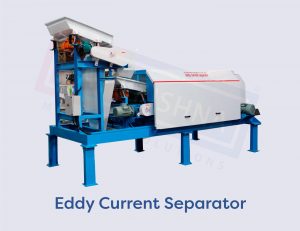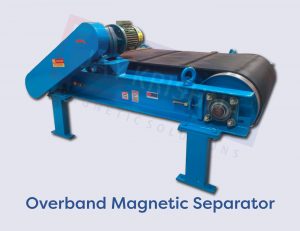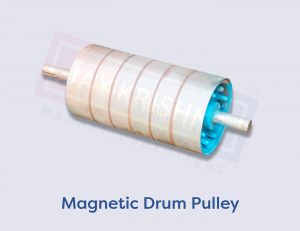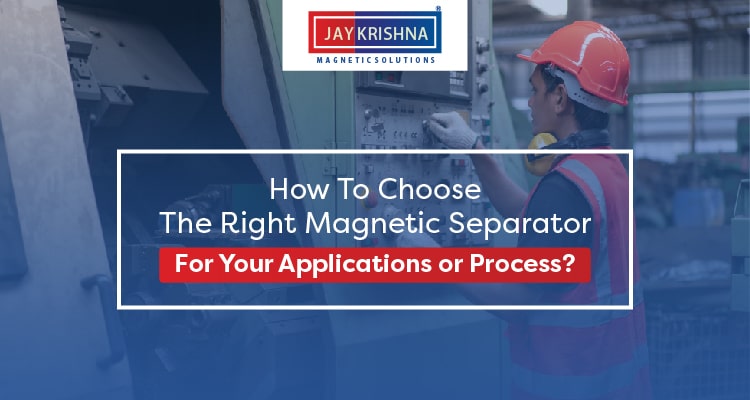The 3 Best Magnetic Separators For E-Waste Recycling (WEEE)
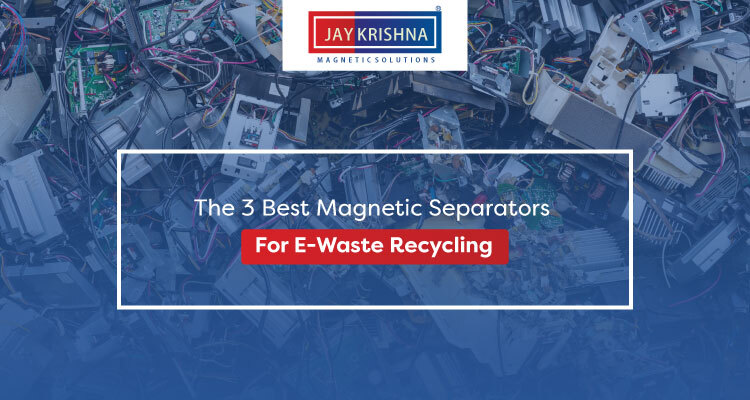
Introduction
Due to this rapid expansion of IT and communication industries, the usage of electronic products has highly increased around the world.
But we all know that this electronic equipment doesn’t last for life. Either they stop working or get broken – so what after that?
Now that they have become E-waste that is broken or unwanted electrical and electronic equipment, it’s essential to recycle them responsibly to avoid any harm to the environment and humankind.
While e-waste recycling has enormous benefits, it can pose numerous health and environmental risks if not done correctly.
The recycling industry and e-waste management are well aware of the importance of e-waste recycling and how using the best magnetic separators for recycling is crucial to avoid environmental risks.
Read ahead to get a firm understanding of E-waste recycling: what it is, its challenges and effects, its importance, and most importantly, what are the best magnetic separators to use in the e-waste recycling industry.
What is E-waste (WEEE)?
Electronic and electrical waste, or e-waste, means discarded electronic products that are no longer intended for use.
Electronic waste includes
- Household appliances such as fridges, washing machines, dishwashers, toasters, ovens, iron, hairdryers, etc.
- IT & telecommunications products such as computers, laptops, tablets, phones, printers, scanners, etc.
- Consumer products such as Televisions, electric toothbrushes, stereo systems, etc.
- Medical equipment
- Monitoring and control instruments
- Batteries and accumulators
- Electrical and electronic tools
What Is The Recycling Of Electrical And Electronic Equipment Waste?
Waste electrical and electronic equipment (WEEE) recycling is the process of extracting valuable materials from e-waste. The process includes shredding e-waste into smaller pieces for reusing in a new electronic product. Any discarded or obsolete electronic equipment can be recycled for reuse and reprocessing.
Recycling e-waste is crucial to protect environmental health due to increased environmental pollution caused by e-waste. Electronic waste comprises toxic chemicals and hazardous materials, which can release toxic substances into the environment if not disposed of in the right way.
Challenges & Negative Effects Of WEEE On The Environment
3 Major Recycling Challenges
- Difficult-to-recycle electronic devices
Many electronic devices are designed in such a way that it makes it difficult to be recycled. To give an example, for better functionality and performance, mobile phones nowadays are getting launched lighter and slimmer, with non removable batteries. Hence it makes the recycling process tough and labor-intensive.
- Recycling of chemical elements
Another challenge recycling industries deal with is that of 60 chemical elements present in e-waste, only 10 can be recycled through separation. These elements are gold, silver, platinum, cobalt, tin, copper, iron, aluminum, and lead.
- Illegal Recycling
As stated above, e-waste contains toxic substances which can cause harmful environmental impacts due to improper recycling. Due to a lack of awareness, people generally throw electronic equipment in the dustbin, which further gets segregated by waste pickers. Later on, this segregated e-waste is illegally and improperly recycled without following the necessary guidelines.
Negative Environmental Effects
- Depositing e-waste into landfills can affect the groundwater as harmful chemicals can be released from landfills into surface water.
- Due to improper extraction of gold and silver elements from e-waste, many harmful chemicals and fumes can be released into the air, causing air pollution.
What Are The Components Of E-waste Can Be Recovered?
The list of materials that can be recycled from e-waste is endless; however, below are the top of them.
- Plastic
Plastic materials can be recovered from e-waste and can be used to manufacture new plastic products like plastic sleepers, plastic trays, equipment holders, and more.
- Metal
E-waste has many metal elements that can be retrieved and recycled to make new steel products and metals.
- Mercury
Electronic devices contain mercury which can be recycled using advanced separation technology to eliminate mercury.
- Circuit Boards
Various resources such as gold, silver, tin, copper, and other valuable metals can be recovered from circuit boards.
- Batteries
Cadmium, steel, nickel, and cobalt can be recycled from scrap batteries for re-using in new batteries.
- Hard disk
Aluminum ingots can be retrieved from hard disks that are found to be useful for automobiles.
Why Is Recycling Of E-Waste Important?
Here are the top benefits of recycling e-waste
- Conserves Natural Resources by recovering valuable materials from waste electronics
- Environment Protection by properly handling and recycling toxic materials like mercury, lead, and cadmium present in the e-waste.
- Reduce Landfills by recycling e-waste that can cause unnecessary dumps and landfills.
- Reduce Greenhouse Gas Emissions
- Less Harm To The Ecosystem
- Decreases Demand Of New Raw Materials
Best Magnetic Separators Used In E-Waste Recycling Industry
Electronic waste contains many valuable metals that need advanced separation technology for the successful recycling of fine and small metals from e-waste.
Different types of magnetic separators are used for recycling e-waste according to specific separation requirements.
For primary ferrous metals removal, magnetic separators like Overband Magnetic Separator and Magnetic Drum Pulleys are used.
For the separation of non-ferrous metals Eddy Current Separator is used due to its optimum recovery capabilities and high intensity to separate even the tiniest metal fraction.
Quality Magnetic Separators For E-Waste Recycling
Eddy Current Separator For E-Waste Recycling
Our Eddy Current Separator is one of the most preferred magnetic separators in e-waste recycling. Designed using high-intensity magnets, the separator is suitable enough to efficiently separate ferrous and non-ferrous impurities from e-wastes.
Features:
- Highly Durable
- Low Maintenance
- Strong Structure
- Quality Non-Ferrous Metal Recovery
Overband Magnetic Separator For E-Waste Recycling
Our Overband Magnetic Separator is another quality separator widely used in e-waste recycling industries. The separator is specifically designed to eliminate tramp metal from the e-waste products carried by a belt, vibratory feeders, or by inclined planes.
Features:
- Easy Maintenance
- Rugged Machine Construction
- Highly Efficient
- Long Conveyor Belt Life
Magnetic Drum Pulley For E-Waste Recycling
Permanent Magnetic Drum Pulley is a powerful magnetic separator known for its reliable performance in e-waste recycling industries. It is ideal for extracting iron particles from the e-waste material flow with low levels of iron impurities.
Features:
- Manual Cleaning Option
- 2500 – 8500 Gauss Magnetic Field Range
- Zero Maintenance
- Welded Construction
How Can Jaykrishna Magnetics Pvt. Ltd. Help?
To address this challenge, e-waste recycling industries require a powerful e-waste recycling separator machine.
Well, that is where we can help you out!
Through our comprehensive range of magnetic separators for recycling industries, we help industries do effective recycling of discarded electronic equipment.
A large number of recycling industries have already trusted us due to our effective, innovative, and highly efficient separation solution for e-waste.
So visit our website to learn more about our magnetic separators, or if you are interested in detailed information, reach out to us at info@jkmagnetic.com

